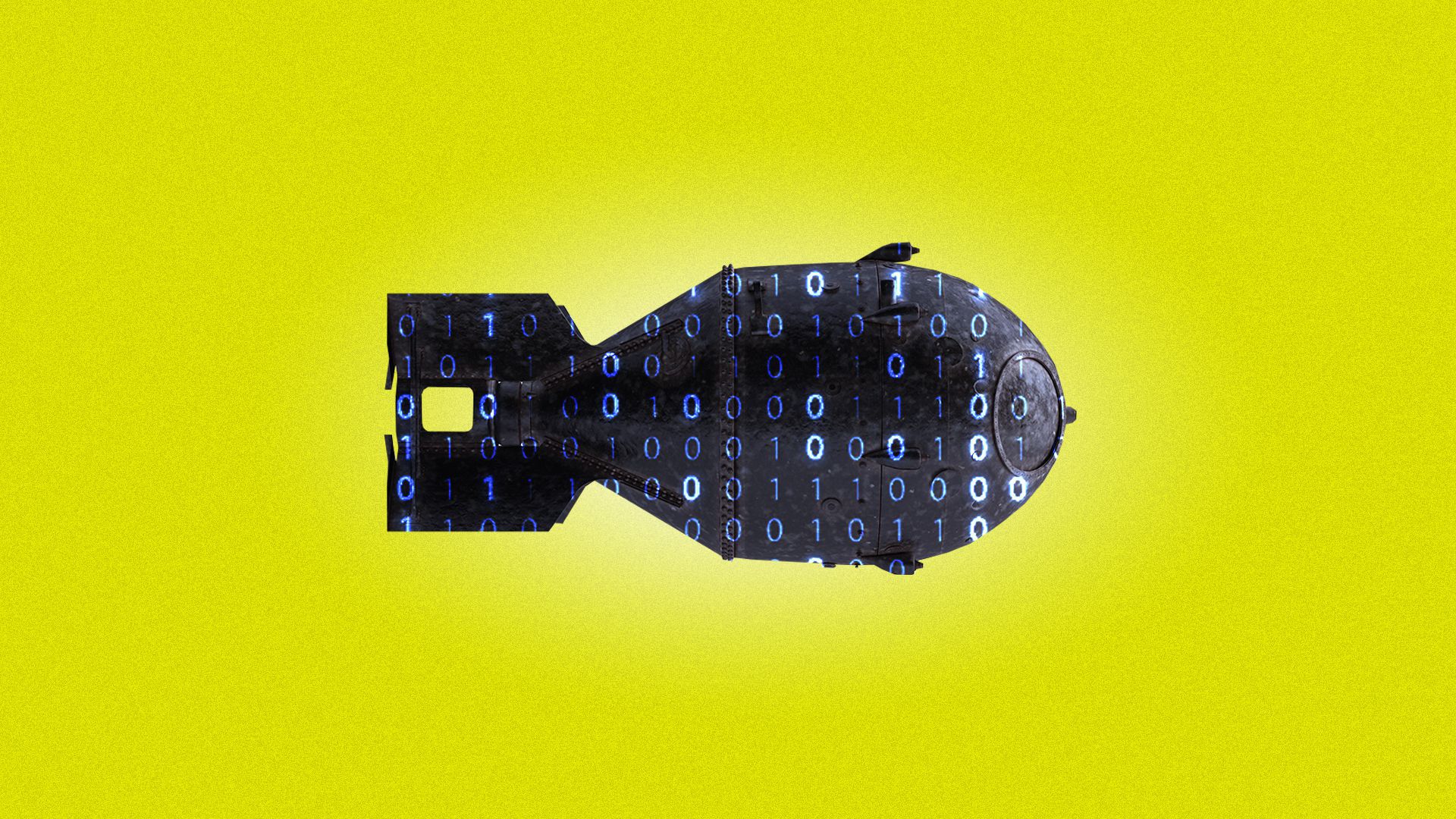The Devastating Truth Behind a Nuclear Attack

The terror of nuclear war is a shadow that has loomed large over the world ever since the devastation witnessed at Hiroshima and Nagasaki during World War Two. It threatens to wipe us from the face of the earth as if we never existed. As a species however, we remain blissfully ignorant to the true extent of what nuclear warfare would actually look like. To try and bring a sense of reality to the dangers of nuclear weapons, we’re going to outline what one bomb would do to a city – not widespread nuclear war – just one, single bomb.
“I know not with what weapons World War III will be fought, but World War IV will be fought with sticks and stones.”
Albert Einstein
In the following scenario we’re going to detail what would happen if a B83 nuclear bomb was detonated in one of the world’s major cities. The B83, with a maximum yield of 1.2 megatons, is the largest bomb in the current arsenal of the United States Army. This makes it more than 86 times more powerful than “Little Boy,” the bomb that destroyed Hiroshima in WW2. It’s also over 40 times LESS powerful than the Tsar Bomb, the largest and most powerful nuclear weapon ever tested. Let that sink in for a second before we get into our thought experiment.

Nuclear explosions occur in three distinct phases:
- The Blast
- The Shockwave
- The Fallout
In our unassuming, unnamed city; imagine life taking place as normal. People are working, playing, studying, sleeping – when all of a sudden everything changes. In an instant their lives and the lives of countless others are changed forever as a nuclear strike rips through the heart of the city.
The Blast

The first phase of the explosion happens within less than a second. In a millisecond a ball of plasma hotter than the Sun appears and develops into a fireball more than two kilometres across. At its core, temperatures can reach up to 15 million Kelvin in the Sun. However, with temperatures of a few tens of millions of Kelvin in the fireball of a nuclear blast, we easily have the Sun beaten here. Everything within this two kilometre ball is instantly eradicated. Gone. It all just evaporates.
An intense flash of light engulfs the entire city. If you were outside the blast radius, but happened to be facing that direction, you would be blinded for a couple of hours. The heat of this light produces a thermal pulse with so much energy that it burns everything as far as 13 kilometres from the initial detonation. This means that everything in an area of roughly 500 square kilometres that is capable of burning starts to burn. Everything – from wood to flesh and bone – burns instantly. If you’re within the unfortunately wide reach of the thermal pulse you will be on fire almost instantaneously.
The Shockwave

Initial Shockwave
Now the second phase begins. It occurs over the course of a few seconds. People not within the immediate blast radius will now notice that something is wrong. Unfortunately, it’s already too late for hundreds of thousands of people. The initial flash is followed by the shockwave. The heat and radiation of the fireball creates a bubble of superheated and super-compressed air around it that’s now expanding explosively. It travels faster than the speed of sound creating winds stronger than those seen in a hurricane.
Human infrastructure is rendered into waste by the devastating power of the shockwave. Most major buildings within a kilometre of the fireball are destroyed from top to bottom. Only steel reinforced concrete is able to partially resist the pressure. Mighty trees that had been burned from the heat of the blast are snapped like twigs. Any people outside are thrown around like ragdolls.
Feeding the Flames
The shockwave weakens as it travels outwards, but this still causes about 175 square kilometres of houses to collapse as if they were nothing; trapping tens of thousands of people who didn’t have any time to react. Fuel stations explode and fire spreads throughout the rubble. A mushroom cloud of dust and ash rises kilometres into the sky in the next few minutes and casts a dark shadow over the decimated city. This violently pulls in the fresh air surrounding the city, destroying more buildings and providing an abundance of oxygen to further fuel the flames.
After this, what happens next entirely depends on the city itself. If there’s enough fuel, fires may turn into a firestorm that burns the rubble, everybody trapped in it, and anyone left trying to flee the devastation. Up to 21 kilometres from the explosion people rush to their windows to witness the mushroom cloud forming; unaware the shockwave is still coming at them. It shatters their windows in an instant, creating a storm of glass.
The Nuclear Fallout

The third phase begins in the coming hours and days. We’ve been conditioned to believe the idea that help will come no matter the disaster. This situation is very different. A nuclear explosion is similar to every natural disaster occurring all at once. There are hundreds of thousands if not millions of people with serious injuries. In the next few minutes and hours thousands will die because of these injuries and their inability to get treatment. Countless people are trapped in collapsed buildings in situations comparable to earthquakes.
More are left blind by the flash or deaf from the blast wave. This leaves them unable to flee through streets that, even if they could navigate them, are impassable due to rubble and debris. They’re terrified, confused and don’t know what happened to them or why. Most likely many hospitals have been completely levelled, along with all the other buildings, and most medical professionals are either dead or injured along with everyone else.
The Terror of Nuclear Radiation
The survivors lucky enough to have been in rail tunnels or standing in just the right place to somehow still be unburned and unhurt won’t have escaped harm yet. Now, it’s the turn of radiation to rear its head and start to exert its horrifying influence. A black rain of radioactive dust and ash descends on the city. Every breath taken in by survivors is poison to the lungs. Over the coming days the people who receive the highest doses of radiation exposure will die. There will be no help – not for hours or even days.
Civilisation quite simply cannot operate when there is a total breakdown of infrastructure. Roads are blocked, the train tracks warped, runways cluttered with rubble. No water, no electricity, no communication, no stores to replenish supplies from. Help from surrounding cities will have a hard time entering the disaster zone. Even if they can the radioactive contamination will make it risky to get too close. After a nuclear attack you’re on your own.
Those Who Remain…
Bit by bit, people emerge from the rubble on foot, contaminated with radioactive fallout, and carrying what little they may have left. They are slow, in pain, traumatised, and they all need food, water, and medical treatment fast. If you thought that was the end, you’re sadly mistaken. The damage done by a nuclear weapon doesn’t end when the fires burn out and the smoke clears. The hospitals in the neighbouring cities are under-equipped for a disaster of this scale and overwhelmed with tens or hundreds of thousands of patients with serious injuries.
In the weeks, months and years to come many of those who survived will succumb to cancers like leukaemia. The reason no government wants you to think about this is because there is no serious humanitarian response possible to a nuclear explosion. There’s no way to really help the immediate victims of a nuclear attack. This is not a hurricane, wildfire, earthquake, or nuclear accident. It is all of these things at once but much worse. No nation on Earth is prepared to deal with this kind of attack.
A Non Nuclear Future?
A report from Reuters in 2019 claims that the risk of nuclear war is at its highest point since World War Two. World leaders are once again threatening each other publicly with nuclear attacks. Hopefully we’ve shown you the extent of devastation that could be caused by just one nuclear bomb. To even try and predict the destruction that a nuclear war would be close to impossible. As things currently stand, very little lies between a small group of powerful people and totally eradicating the world as we know it. There’s really only one solution…
The total elimination of all nuclear weapons and a vow to never create them again.
In 2017 over two thirds of the nations of the world, along with hundreds of civil organisations, agreed to prohibit and eliminate nuclear weapons. Currently, only nine countries across the globe have possession of nuclear weapons. These weapons represent a threat to the human race as a species as a whole. Regardless of how you feel about individual policies or countries, you should be on the side of wanting these weapons to be discontinued forever.
If not, we all live the rest of our lives with a gun to our heads, and the trigger in the hands of nine powerful people.

We hope this piece hasn’t worried you too much, but we feel it’s important to try and demonstrate the true horrors of a nuclear attack. But, if you still need help surviving the apocalypse, we recommend this article.

